Wonders of the World by A&A
Wonders of the World
Various lists of the Wonders of the World have been compiled from antiquity to the present day, to catalogue the world's most spectacular natural wonders and manmade structures.
The Seven Wonders of the Ancient World is the first known list of the most remarkable creations of classical antiquity; it was based on guidebooks popular among Hellenic sightseers and only includes works located around the Mediterranean rim and in Mesopotamia. The number seven was chosen because the Greeks believed it represented perfection and plenty, and because it was the number of the five planets known anciently, plus the sun and moon.[1] Many similar lists have been made.
Contents
[hide]- 1Seven Wonders of the Ancient World
- 2Lists from other eras
- 3Recent lists
- 3.1American Society of Civil Engineers
- 3.2USA Today's New Seven Wonders
- 3.3Seven Natural Wonders of the World
- 3.4New7Wonders of the World
- 3.5New7Wonders of Nature
- 3.6New7Wonders Cities
- 3.7Seven Wonders of the Underwater World
- 3.8Seven Wonders of the Industrial World
- 3.9Seven Wonders of the World film
- 3.10Seven Wonders of the Solar System
- 3.11Other lists of wonders of the world
- 4See also
- 5Notes
- 6References
- 7Further reading
- 8External links
Seven Wonders of the Ancient World
The historian Herodotus (484 – ca. 425 BC) and the scholar Callimachus of Cyrene (ca. 305–240 BC), at the Museum of Alexandria, made early lists of seven wonders. Their writings have not survived, except as references.
The classic seven wonders were:
- Colossus of Rhodes
- Great Pyramid of Giza
- Hanging Gardens of Babylon
- Lighthouse of Alexandria
- Mausoleum at Halicarnassus
- Statue of Zeus at Olympia
- Temple of Artemis at Ephesus
The only ancient world wonder that still exists is the Great Pyramid of Giza.
Lists from other eras
In the 19th and early 20th centuries, some writers wrote their own lists with names such as Wonders of the Middle Ages, Seven Wonders of the Middle Ages, Seven Wonders of the Medieval Mind, and Architectural Wonders of the Middle Ages. However, it is unlikely that these lists originated in the Middle Ages, because the word "medieval" was not invented until the Enlightenment-era, and the concept of a Middle Age did not become popular until the 16th century. Brewer's Dictionary of Phrase and Fable refers to them as "later list[s]", suggesting the lists were created after the Middle Ages.
Many of the structures on these lists were built much earlier than the Medieval Ages but were well known.
Typically representative are:
- Catacombs of Kom el Shoqafa
- Colosseum
- Great Wall of China
- Hagia Sophia
- Leaning Tower of Pisa
- Porcelain Tower of Nanjing
- Stonehenge
Other sites sometimes included on such lists:
- Cairo Citadel
- Cluny Abbey
- Ely Cathedral
- Taj Mahal
Recent lists
Following in the tradition of the classical list, modern people and organisations have made their own lists of wonderful things ancient and modern. Some of the most notable lists are presented below.
American Society of Civil Engineers
In 1994, the American Society of Civil Engineers compiled a list of Seven Wonders of the Modern World, paying tribute to the "greatest civil engineering achievements of the 20th century".
| Wonder | Date started | Date finished | Location | Significance |
|---|---|---|---|---|
| Channel Tunnel | December 1, 1987 | May 6, 1994 | Strait of Dover, between the United Kingdom and France | The longest undersea portion of any tunnel in the world. |
| CN Tower | February 6, 1973 | June 26, 1976 | Toronto, Ontario, Canada | Tallest freestanding structure in the world 1976–2007. |
| Empire State Building | January 22, 1930 | May 1, 1931 | New York City, New York, U.S. | Tallest structure in the world 1931–1967. First building with 100+ stories. |
| Golden Gate Bridge | January 5, 1933 | May 27, 1937 | Golden Gate Strait, north of San Francisco, California, U.S. | The longest suspension bridge main span in the world from 1937 to 1964. |
| Itaipu Dam | January 1970 | May 5, 1984 | Paraná River, between Brazil and Paraguay | The largest operating hydroelectric facility in the world in terms of annual energy generation. |
| Delta and Zuiderzee Works | 1920 | May 10, 1997 | Zeeland, South Holland, North Holland, Friesland and Flevoland, Netherlands | The largest hydraulic engineering project undertaken by the Netherlands during the twentieth century. |
| Panama Canal | January 1, 1880 | January 7, 1914 | Isthmus of Panama | One of the largest and most difficult engineering projects ever undertaken. |
USA Today's New Seven Wonders
In November 2006 the American national newspaper USA Today and the American television show Good Morning America revealed a new list of New Seven Wonders as chosen by six judges. An eighth wonder was chosen on November 24, 2006 from viewer feedback.
| Number | Wonder | Location |
|---|---|---|
| 1 | Potala Palace | Lhasa, Tibet, China |
| 2 | Old City of Jerusalem | Jerusalem |
| 3 | Polar ice caps | Polar regions |
| 4 | Papahānaumokuākea Marine National Monument | Hawaii, United States |
| 5 | Internet | Earth |
| 6 | Mayan ruins | Yucatán Peninsula, México |
| 7 | Great Migration of Serengeti and Masai Mara | Tanzania and Kenya |
| 8 | Grand Canyon (viewer-chosen eighth wonder) | Arizona, United States |
Seven Natural Wonders of the World
Similar to the other lists of wonders, there is no consensus on a list of seven natural wonders of the world, and there has been debate over how large the list should be. One of the many existing lists was compiled by CNN:
- Aurora
- Grand Canyon
- Great Barrier Reef
- Harbor of Rio de Janeiro
- Mount Everest
- Parícutin volcano
- Victoria Falls
New7Wonders of the World
In 2001 an initiative was started by the Swiss corporation New7Wonders Foundation to choose the New7Wonders of the World from a selection of 200 existing monuments. Twenty-one finalists were announced January 1, 2006. Egyptians were not happy that the only surviving original wonder, the Great Pyramid of Giza, would have to compete with the likes of the Statue of Liberty, the Sydney Opera House, and other landmarks, calling the project absurd. In response, Giza was named an honorary Candidate. The results were announced on July 7, 2007, in Lisbon, Portugal:
New7Wonders of Nature
New7Wonders of Nature (2007–11), a contemporary effort to create a list of seven natural wonders chosen through a global poll, was organized by the same group as the New7Wonders of the World campaign.
- Iguazu Falls
- Hạ Long Bay
- Jeju Island
- Puerto Princesa Underground River
- Table Mountain
- Komodo
- Amazon rainforest
New7Wonders Cities
New7Wonders Cities is the third global vote organized by New7Wonders.
- Durban, South Africa
- Vigan, The Philippines
- Havana, Cuba
- Kuala Lumpur, Malaysia
- Beirut, Lebanon
- Doha, Qatar
- La Paz, Bolivia
Seven Wonders of the Underwater World
The Seven Underwater Wonders of the World was a list drawn up by CEDAM International, an American-based non-profit group for divers, dedicated to ocean preservation and research.
In 1989 CEDAM brought together a panel of marine scientists, including Dr. Eugenie Clark, to pick underwater areas which they considered to be worthy of protection. The results were announced at The National Aquarium in Washington DC by actor Lloyd Bridges, star of TV's Sea Hunt:
- Palau
- Belize Barrier Reef
- Great Barrier Reef
- Deep-Sea Vents
- Galápagos Islands
- Lake Baikal
- Northern Red Sea
Seven Wonders of the Industrial World
British author Deborah Cadbury wrote Seven Wonders of the Industrial World, a book telling the stories of seven great feats of engineering of the 19th and early 20th centuries. In 2003, the BBC aired a seven-part docudrama exploring the same feats, with Cadbury as a producer. Each episode dramatised the construction of one of the following industrial wonders:
- SS Great Eastern
- Bell Rock Lighthouse
- Brooklyn Bridge
- London sewerage system
- First Transcontinental Railroad
- Panama Canal
- Hoover Dam
Seven Wonders of the World film
Seven Wonders of the World is a 1956 film in which Lowell Thomas searches the world for natural and man made wonders and invites the audience to try to update the ancient Greek Wonders of the World list.
Seven Wonders of the Solar System
In a 1999 article, Astronomy magazine listed the "Seven Wonders of the Solar System". This article was later made into a video.
- Enceladus, a moon of Saturn
- The Great red spot of Jupiter
- The Asteroid belt
- The surface of the Sun
- The Oceans of Earth
- The Rings of Saturn
- Olympus Mons on Mars
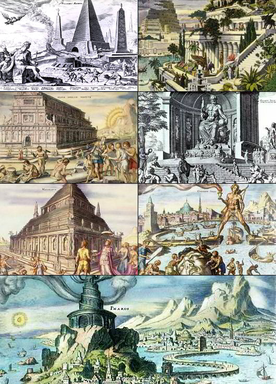
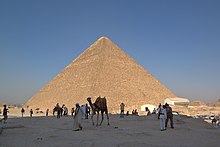
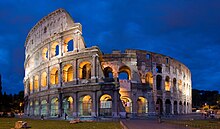
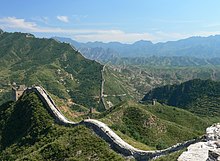
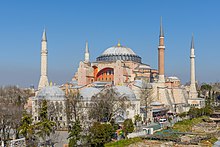
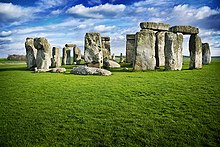
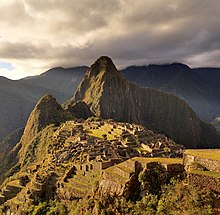


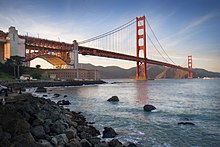
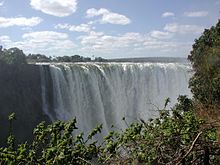

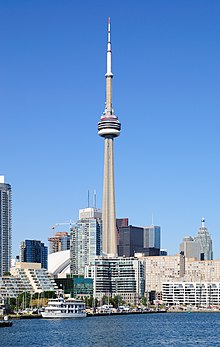






Comments
Post a Comment